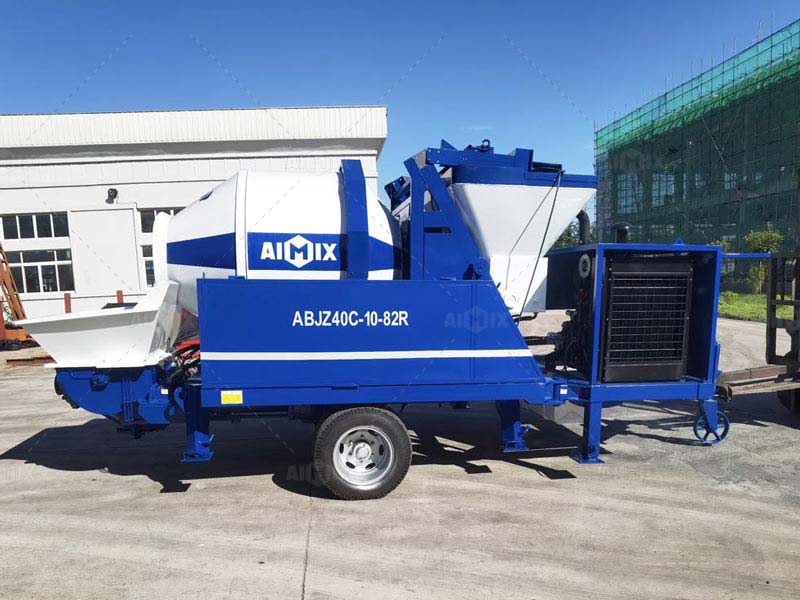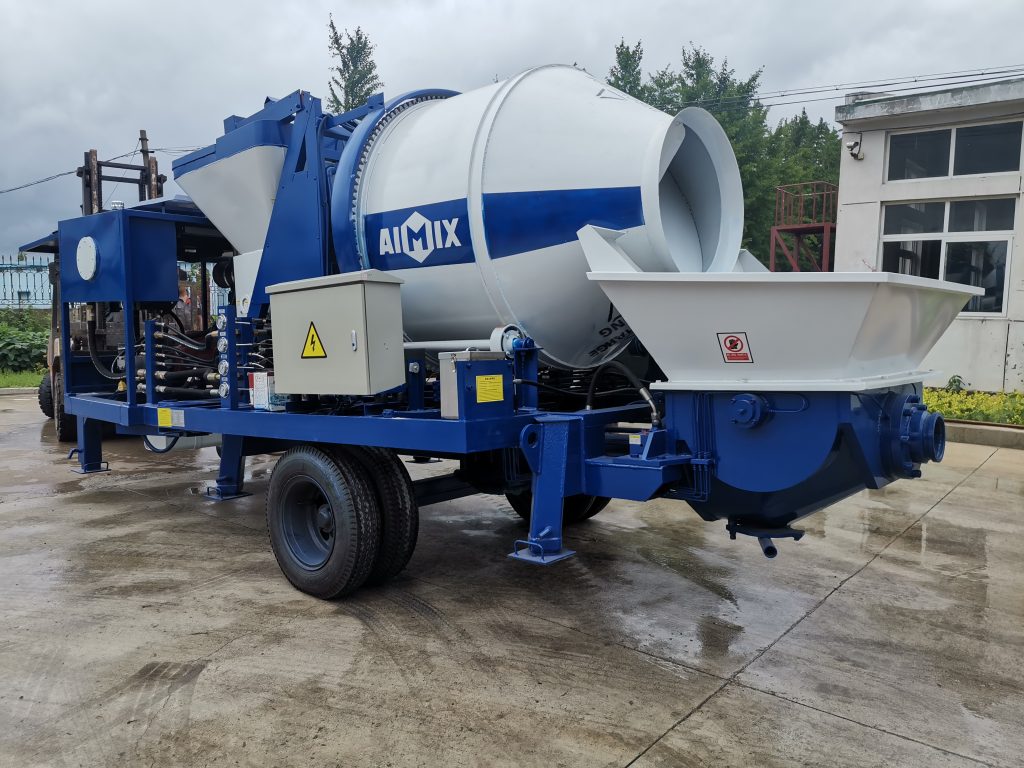A diesel concrete pump is a crucial piece of equipment in the construction industry, widely used for its ability to efficiently pump concrete to various work sites. This type of pump is especially beneficial in areas where access to electricity is limited or unavailable, as its diesel engine provides the necessary power to operate independently. In addition to being reliable and versatile, diesel concrete pumps are used in diverse construction settings, from large-scale infrastructure projects to small residential builds.

In this passage, we will explore the steps required to properly install a diesel concrete pump, the considerations necessary for its safe use, and tips for maximizing its performance and longevity.
Preparation for Installation
Before installing the diesel concrete pump, thorough preparation is required to ensure the setup process is smooth and the pump operates efficiently. Key factors to consider in this preparation phase include:
a. Site Inspection and Setup
The first step in installing a diesel concrete pump is to inspect the construction site where the pump will be used. The area needs to be level and firm to support the weight of the pump, as well as the concrete it will pump. Ensuring that the site has good drainage and is free of obstacles will help to avoid any complications during operation.
b. Check the Pump’s Components
Inspect all components of the diesel concrete pump prior to installation. Ensure the main parts, such as the diesel engine, hydraulic system, pumping system, and electrical controls, are in good condition and free from damage. Pay special attention to the hoses and pipes through which the concrete will be pumped. Any cracks or leaks could lead to inefficient pumping or hazardous situations during operation.
c. Safety Equipment and Materials
Ensure that safety equipment such as helmets, gloves, goggles, and steel-toed boots are readily available for the personnel who will be handling the pump. Additionally, have the necessary tools and materials for installation, such as wrenches, screwdrivers, and lubricants, on hand for assembling and maintaining the equipment.
Installation Process
Once you’ve prepared the site and checked the equipment, the diesel concrete pump can be installed following these steps:
a. Positioning the Pump
Carefully position the diesel concrete pump on stable ground. Since this type of pump is often mounted on a trailer for ease of transport, you may need to stabilize the trailer using adjustable jacks or blocks. Ensure that the pump is level, as this will ensure smoother operation and reduce the risk of malfunctions.
b. Setting Up the Concrete Pipes and Hoses
Next, attach the appropriate piping and hoses to the pump. Diesel concrete pumps typically use steel pipes and flexible rubber hoses to transport the concrete from the pump to the desired location. Ensure that the connections between the pump and the pipes are tight and secure to prevent leaks. Arrange the hoses in a way that minimizes bends and twists, as these can cause blockages or reduce the pumping efficiency.
c. Connecting the Hopper and Mixer
The diesel concrete pump’s hopper is where the concrete mix is loaded before being pumped to the target location. It is important to properly connect the hopper to the mixer of concrete pump or the source of the concrete. Make sure the hopper is securely fastened and positioned so that concrete can flow freely into the pump.

Operating the Diesel Concrete Pump
Once the pump is installed, proper operation is key to achieving efficient results. Below are steps to follow for safe and effective use:
a. Pre-Start Inspection
Before starting the diesel concrete pump, perform a final check on all its components. Ensure that the diesel engine has sufficient fuel and oil levels, and check the hydraulic fluid and other lubricants. Verify that the concrete mix is of the correct consistency for pumping—too thick, and the pump may struggle; too thin, and the concrete may not set properly.
b. Starting the Pump
Turn on the diesel engine, allowing it to warm up for a few minutes. Diesel engines are durable but need some time to reach optimal operating temperatures. Once the engine is running smoothly, activate the hydraulic system that powers the pumping mechanism.
c. Adjusting the Pump’s Pressure
Most diesel concrete pumps have adjustable pressure settings that control the force with which the concrete is pumped. Adjust this pressure according to the distance and height you need to pump the concrete. For high-rise projects, higher pressure may be needed, while closer, lower sites can make use of lower pressure settings. Always follow the manufacturer’s recommendations regarding pressure levels to avoid overloading the pump.
d. Monitoring During Operation
As the concrete pump operates, monitor it closely to ensure that the system is running smoothly. Keep an eye on the engine temperature, pressure gauges, and the flow of concrete. Ensure that the concrete mix continues to flow into the hopper at a steady rate, and be prepared to halt operations if any problems arise, such as blockages or leaks.
e. Handling Blockages
If a blockage occurs in the concrete hoses or pipes, stop the pump immediately. Most diesel concrete pumps come with a reverse pumping feature that can be used to relieve pressure and clear blockages. If this feature does not resolve the issue, manually disconnect the hose and clear the blockage. Avoid using excessive force, as this could damage the pipes or hoses.
Maintenance Tips for Longevity
To ensure your diesel concrete pump remains in good working condition, follow these maintenance tips:
a. Regular Cleaning
After each use, thoroughly clean the pump’s hopper, pipes, and hoses to remove any leftover concrete. Allowing concrete to harden inside the pump can lead to costly repairs and downtime. Use water and appropriate cleaning tools to flush out any remaining material from the system.
b. Engine and Hydraulic System Maintenance
Regularly check the diesel engine for any wear and tear, and change the oil and filters as recommended by the manufacturer like Aimix. Similarly, the hydraulic system should be checked for fluid levels and potential leaks. Keep an eye on the condition of seals, gaskets, and other parts prone to wear.
c. Greasing and Lubrication
Diesel concrete pumps have several moving parts that require regular lubrication to prevent friction and wear. Refer to the pump’s manual for guidance on where and how often to apply grease or lubricants.
d. Regular Inspection of Pipes and Hoses
Inspect the concrete pipes and hoses regularly for signs of damage or wear. Replace any worn-out parts promptly to avoid operational failures during use.
Proper installation and operation of a diesel concrete pump are essential for efficient concrete pumping and project success. By preparing the site, following the installation steps, and ensuring regular maintenance, you can maximize the lifespan and performance of the pump. Following the manufacturer’s guidelines and practicing safe operation will not only ensure better results but also contribute to a safer and more efficient construction site.